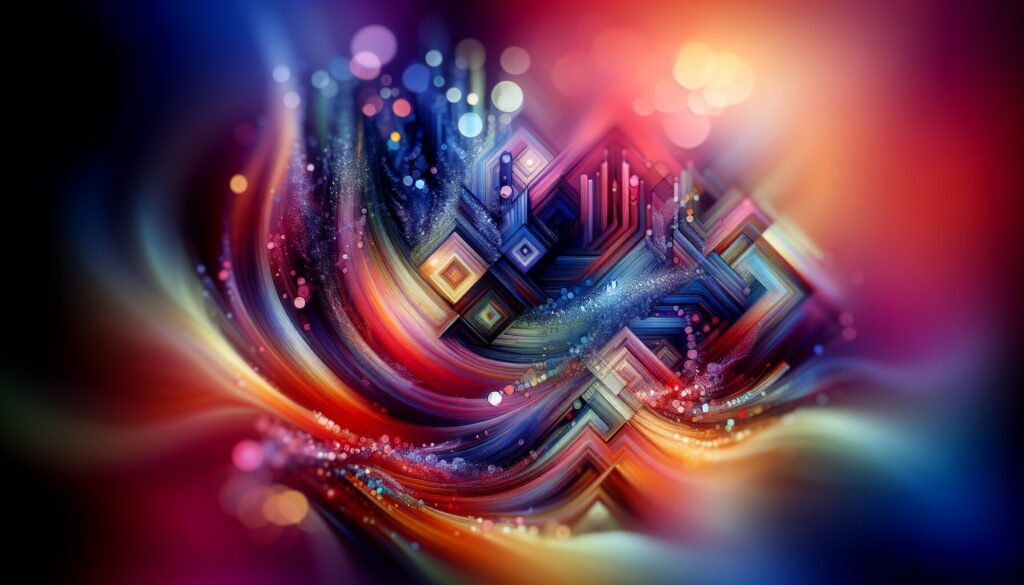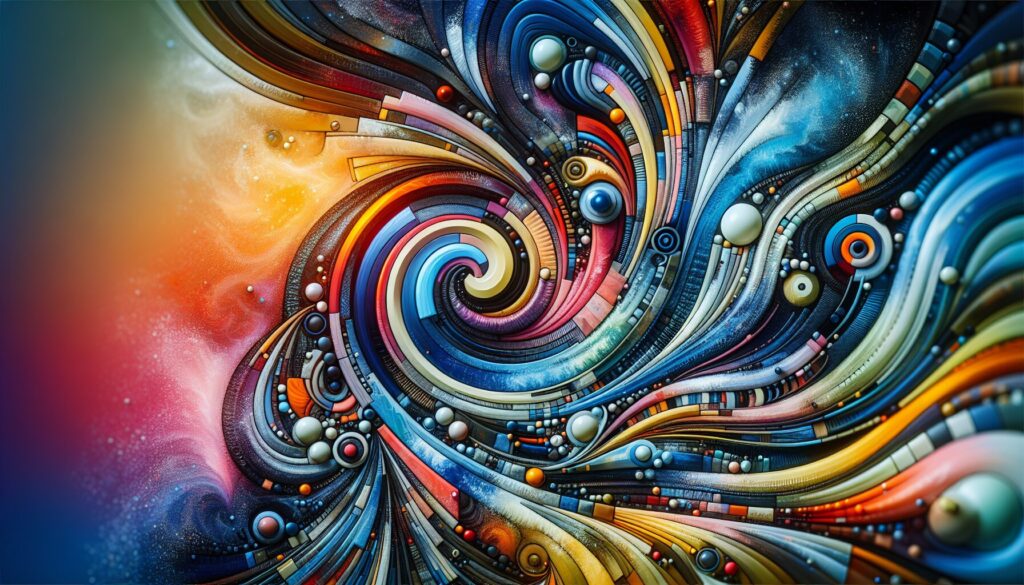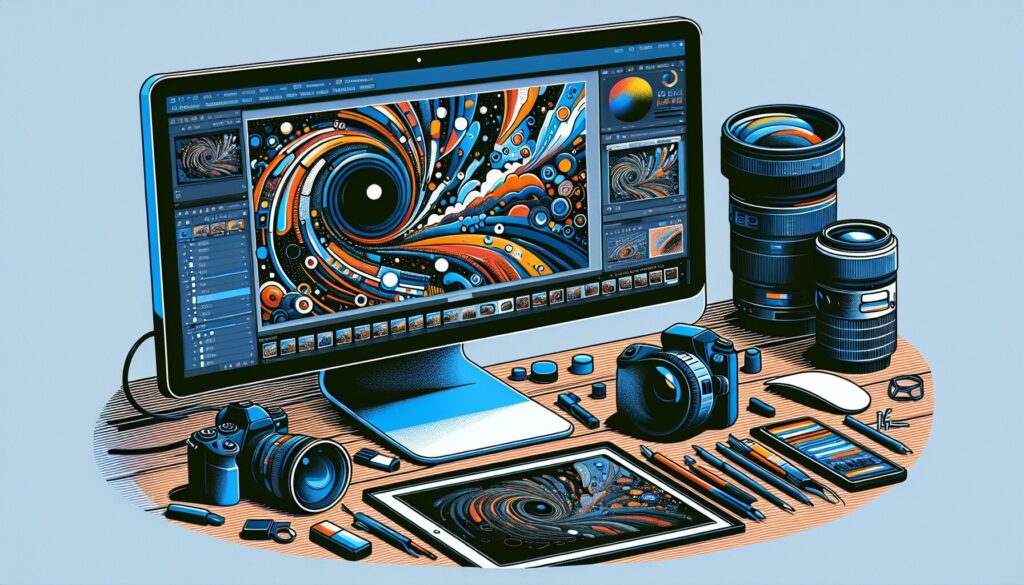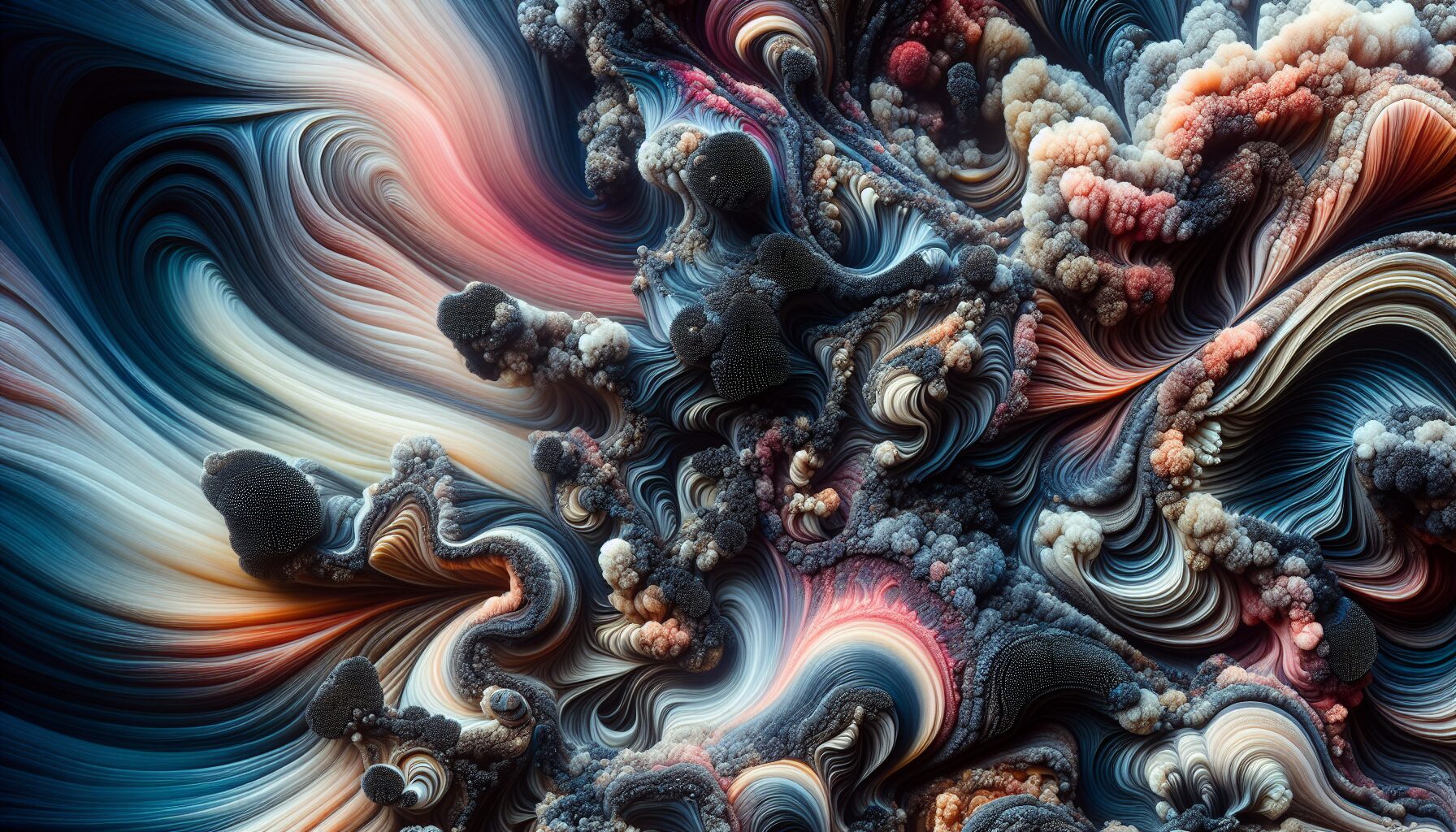Abstract photography, a fascinating realm of visual art, encourages photographers to perceive the world differently. My journey began with a Canon EOS R5 and a 50mm f/1.8 lens. I experimented with various settings, often opting for ISO 100, f/16, and a shutter speed of 1/30s. These settings allowed me to capture intricate details and textures. Using a polarizing filter, I enhanced colors and reduced glare, which is particularly useful when photographing reflective surfaces. In Australia, the vivid landscapes offer unique opportunities. From the stunning blues of the Great Barrier Reef to the earthy tones of the Outback, abstract photography can transform ordinary scenes into extraordinary compositions. Whether capturing the vibrant urban textures of Sydney or the serene patterns of a eucalyptus forest, this form of art invites endless exploration. The Australian Centre for Photography offers excellent resources to further your skills and inspire your creativity.
Essential Equipment for Abstract Photography
When diving into abstract photography, the right gear can make all the difference. One of my favorite cameras for capturing the abstract beauty around Sydney has been the Canon EOS R5. Its 45-megapixel sensor and advanced autofocus system provide incredible detail and focus precision, essential for abstract compositions. For lenses, I often reach for the 50mm f/1.8, which offers a fantastic depth of field and bokeh effect, perfect for isolating subjects and creating dreamy backgrounds.
However, equipment isn’t just about the camera and lens. Tripods are crucial, especially for long exposure shots. I rely on my Manfrotto Befree Advanced, which is both lightweight and sturdy, making it ideal for urban exploration around Melbourne’s bustling streets. Additionally, using a polarizing filter can enhance colors and reduce reflections, particularly useful when shooting near water bodies like the Yarra River. This little accessory can transform an ordinary shot into something extraordinary.
Lighting and Accessories
Lighting plays a significant role in abstract photography. While natural light is often the best, there are times when additional lighting is necessary. I use a portable LED light panel, such as the Godox SL60W, to add creative lighting effects. It’s particularly useful when photographing indoors or during overcast days in Brisbane. Reflectors can also help manipulate light to highlight textures and patterns in subjects.
Moreover, carrying a remote shutter release can be beneficial, especially when working on long exposures. This tool minimizes camera shake, ensuring sharp images. I prefer the Canon BR-E1 for its compatibility and ease of use with my camera. Additionally, memory cards with fast write speeds, like the SanDisk Extreme Pro, are vital for capturing multiple high-resolution images without delay.
Finally, don’t overlook the importance of a durable camera bag. It protects your gear and helps keep everything organized. During my travels across the Outback, I found the Lowepro ProTactic 450 AW II to be invaluable. It offers customizable compartments and all-weather protection, perfect for Australia’s diverse climates.
Investing in the right equipment can enhance your abstract photography journey. Whether exploring the vibrant colors of the Great Barrier Reef or the urban textures of Perth, these tools can help bring your creative vision to life. Consider what best suits your style and the unique landscapes you aim to capture. Embrace the endless possibilities this art form offers.
Techniques to Master Abstract Photography

Capturing abstract photography in Australia offers unique opportunities thanks to its diverse landscapes and vibrant urban settings. To master this art form, understanding key techniques is essential. One effective method is playing with shutter speed. Using a Canon EOS R5, set your shutter speed to 1/30s to capture motion blur. This technique works wonders along Melbourne’s bustling streets, where trams and pedestrians create dynamic scenes.
Another critical aspect is the use of light. Early morning or late afternoon provides the best natural light for striking abstract compositions. With a 50mm f/1.8 lens, aim for a narrow aperture like f/16 to enhance depth. This setting is particularly effective when shooting the dramatic rock formations along the Great Ocean Road. Additionally, experiment with reflections and refractions. A polarizing filter can be a game-changer for capturing reflections in water or glass, reducing glare and enhancing colors.
Embrace Patterns and Textures
Focusing on patterns and textures is another key technique. Whether it’s the intricate details of Sydney Opera House’s sails or the rugged textures of Uluru, these elements can transform ordinary objects into extraordinary abstract images. Consider using a macro lens to capture extreme close-ups. This approach allows you to highlight the subtle textures of natural and urban environments, creating a sense of mystery and intrigue.
Post-processing also plays a vital role in abstract photography. Tools like Adobe Lightroom allow you to adjust contrast, saturation, and hue, bringing out hidden details or accentuating colors. However, it’s crucial to maintain a balance to preserve the original essence of the photograph. According to National Geographic, subtle editing can enhance artistic expression without compromising authenticity.
Lastly, pushing the boundaries of creativity is essential. Abstract photography encourages breaking traditional rules. Try unconventional angles or compositions. For inspiration, explore the works of modern Australian photographers and visit local galleries. Observing how others interpret abstract themes can spark new ideas and techniques in your own work. For those interested in exploring simplicity in photography, check out our comprehensive guide to minimalist photography. Exploring various styles can enrich your approach and broaden your understanding of abstract photography.
Creative Ideas to Inspire Your Abstract Work

Exploring abstract photography can be both exhilarating and challenging. One of my favorite techniques involves capturing the unique textures and colors of the Australian landscape. Using my Canon EOS R5 with a 50mm f/1.8 lens, I set the ISO to 100 and the aperture to f/4. This setup allows me to focus on vivid details while maintaining sharpness. The subtle shifts in light at sunset transform everyday scenes into mesmerizing abstracts.
I once photographed the Sydney Opera House’s shimmering sails at dawn. A polarizing filter helped reduce glare and increased contrast, revealing hidden patterns on its surface. Experimenting with longer exposures, around 1/15s, also added a dreamy effect. This approach can breathe new life into iconic landmarks, offering fresh perspectives.
Finding Inspiration in the Everyday
Abstract photography thrives on seeing the ordinary from an extraordinary angle. A walk through Melbourne’s laneways provides endless inspiration. The vibrant street art and graffiti offer bold colors and dynamic compositions. Using a macro lens, like the Canon 100mm f/2.8, lets you focus on small sections of a mural. Capture the brush strokes and textures that are often overlooked.
Reflections can also inspire abstract art. Consider using the Yarra River as a canvas. Shooting during the golden hour, aim for water ripples reflecting the city skyline. Use a tripod and set your camera to f/11 for deeper focus. The resulting image will showcase a blend of colors and shapes, perfect for abstract photography.
For those interested in night photography, the Milky Way over the Outback is a breathtaking subject. Set your camera to ISO 3200, aperture f/2.8, and a 20-second exposure. This captures the stars’ brilliance while highlighting the vastness of the sky. Locations like Uluru offer a striking backdrop that enriches the composition.
Incorporating movement into your work can also yield fascinating results. I enjoy using intentional camera movement (ICM) techniques. While photographing the Great Ocean Road’s rugged coastline, I set my shutter speed to 1/5s and gently panned the camera. The motion blurred the waves, creating an ethereal effect that resembled a painted canvas.
Finally, collaboration with local artists can enhance your work. Engaging with Australian Centre for Photography offers opportunities to learn from experts. Workshops and exhibitions provide fresh ideas and techniques. Being part of a creative community fosters growth and inspiration, enriching your abstract photography journey.
Post-Processing Tips for Stunning Abstract Photos

Post-processing can transform your abstract photos into stunning visual masterpieces. To achieve perfection, consider using Adobe Lightroom or Photoshop, which offer extensive editing tools. When capturing the texture of Sydney’s iconic Opera House sails, I used my Canon EOS R5 with a 50mm f/1.8 lens. The settings were ISO 100, f/16, and 1/30s to maintain sharpness and detail. During post-processing, I focused on enhancing contrast and texture to emphasize the unique angles and curves.
Begin with adjusting the exposure to bring out hidden details. Increase the contrast to add depth and dimension to your image. This technique works wonders when dealing with the vibrant colors of Melbourne’s street art. Saturation and vibrance adjustments can also help. However, be cautious not to overdo it, as natural colors often provide the best results for an abstract look.
Advanced Techniques for Unique Effects
For those looking to push boundaries, consider using the split-toning feature. This allows you to introduce complementary colors into the highlights and shadows. When I shot the mesmerizing patterns at Lake Hillier, I found split-toning added an ethereal quality to the pink hues. Another technique involves using radial or graduated filters to direct the viewer’s eye. These tools can create focal points or simulate lighting effects that enhance the abstract nature of the photograph.
Sharpening and noise reduction are critical steps, especially if you’ve shot at a high ISO. While photographing the stars over the Outback, my Canon EOS R5 performed well, but noise was inevitable. Use noise reduction sparingly to maintain detail. Additionally, consider cropping to improve composition and remove distractions. This was essential when refining shots of the sweeping lines found in the architecture of Federation Square.
Finally, always save your edited images in a format that retains quality, such as TIFF or high-resolution JPEG. This ensures your abstract photos remain stunning when printed or displayed. For more insights on creating striking images, check out our comprehensive guide to minimalist photography. Happy editing.
Showcasing and Sharing Your Abstract Photography
When it comes to showcasing and sharing your abstract photography in Australia, there are numerous avenues to explore. A great place to start is by participating in local photography exhibitions. Venues like the Centre for Contemporary Photography in Melbourne or the Australian Centre for Photography in Sydney offer excellent platforms to display your work. These places often host exhibitions that feature abstract photography, providing an opportunity to gain exposure and connect with fellow artists. To ensure your images stand out, consider printing them on high-quality materials such as metallic paper or canvas, which can enhance the vivid colours and intricate details typical of abstract photography.
Additionally, social media is an invaluable tool for sharing your abstract creations. Platforms like Instagram and Pinterest are particularly popular among photographers. When sharing your work online, make sure to use relevant hashtags like #AbstractPhotography or #AbstractArtAustralia to reach a wider audience. Furthermore, engaging with photography communities on these platforms can help you gain insights and feedback from peers. For instance, joining groups that focus on specific techniques or styles can inspire new ideas and approaches.
Leveraging Online Platforms and Local Competitions
Online photography platforms provide another excellent means to showcase your art. Websites like Australian Photography and National Association of Visual Arts often feature competitions and galleries that are open to abstract photographers. These competitions can be a great way to challenge yourself and potentially win recognition or prizes. When entering, pay attention to the submission guidelines, such as image resolution and file format, to ensure your work is considered.
As for personal anecdotes, one of my favourite experiences was capturing the abstract beauty of the Australian coast using a Canon EOS R5 with a 50mm f/1.8 lens. I set the camera to ISO 100, f/16, and 1/30s to capture the movement of the waves and the play of light on the water. The result was a series of images that conveyed a sense of fluidity and rhythm, which I later showcased at a local gallery in Brisbane. The feedback I received was overwhelmingly positive, which encouraged me to continue experimenting with different techniques.
Moreover, don’t underestimate the power of networking. Attending photography workshops and seminars can introduce you to influential figures in the art world. Engaging with organizations like Australian Photographic Society can offer valuable resources and connections. By blending online and offline efforts, you can effectively share your unique perspective and contribute to the vibrant community of abstract photography in Australia.
Conclusion
To sum up, abstract photography offers a unique lens through which to explore and capture the beauty of Australia’s diverse landscapes and urban settings. With the right equipment, such as a Canon EOS R5 and a 50mm f/1.8 lens, photographers can enhance their vision through careful use of lighting, filters, and post-processing techniques. Mastering shutter speed, embracing patterns, and experimenting with reflections can transform ordinary scenes into extraordinary abstract compositions. Sharing your work through local exhibitions, social media, and online platforms, while engaging with the photography community, can enrich your creative journey. Ultimately, abstract photography is about pushing boundaries and seeing the world in new and exciting ways. Keep exploring and let your creativity shine. Happy shooting!
Continue Exploring
Ready to capture stunning images with less? Dive into the world of minimalist photography and transform your perspective. Discover the art of simplicity and create breathtaking visuals with ease.
Frequently Asked Questions
What are some essential techniques for mastering abstract photography?
To master abstract photography, experiment with various techniques such as using intentional camera movement, playing with lighting and shadows, focusing on patterns and textures, and exploring post-processing effects. These techniques can help you create intriguing and thought-provoking abstract images.
How do I choose the right camera settings for abstract photography?
Choosing the right camera settings for abstract photography depends on the effect you want to achieve. Generally, a low ISO setting is recommended to minimize noise, while aperture and shutter speed can be adjusted to control depth of field and motion blur. Experimenting with manual settings can lead to more creative outcomes.
What are the best subjects to photograph for creating captivating abstract images?
Almost anything can be a subject for abstract photography. Look for subjects with interesting shapes, colors, and patterns, such as architectural details, reflections in water, natural textures like bark or leaves, and even everyday objects. The key is to view your subject from a unique perspective to transform it into an abstract form.


Leave a Reply